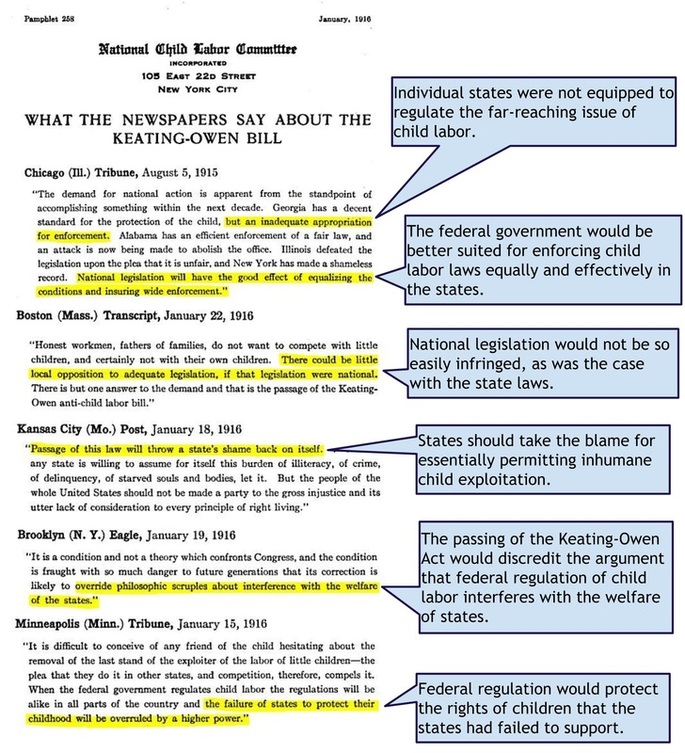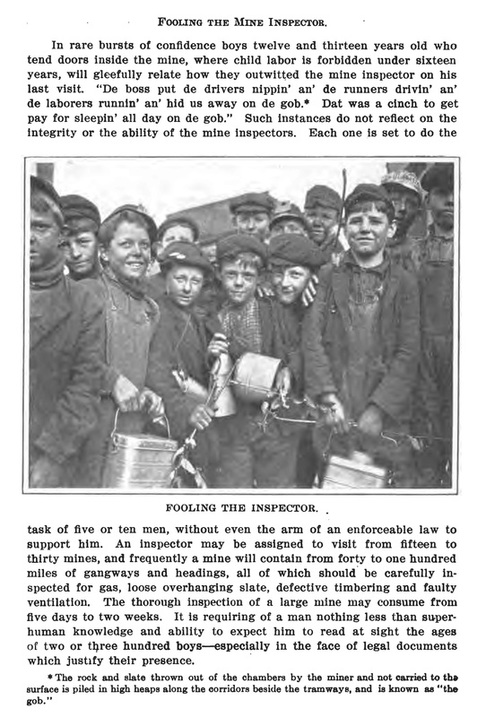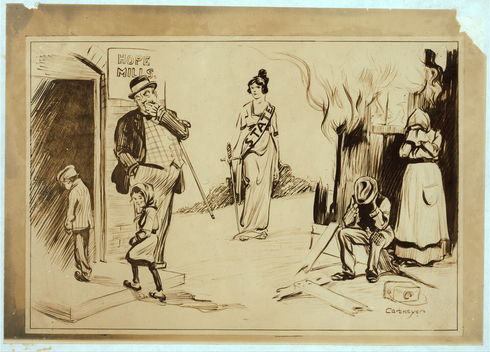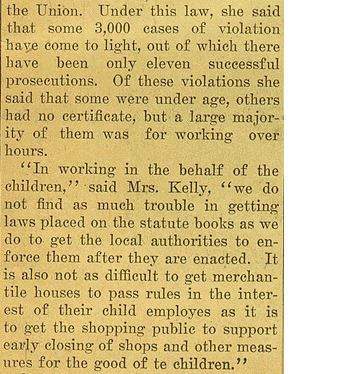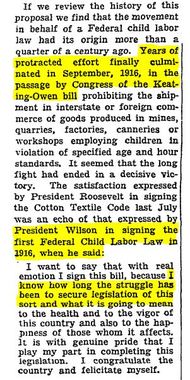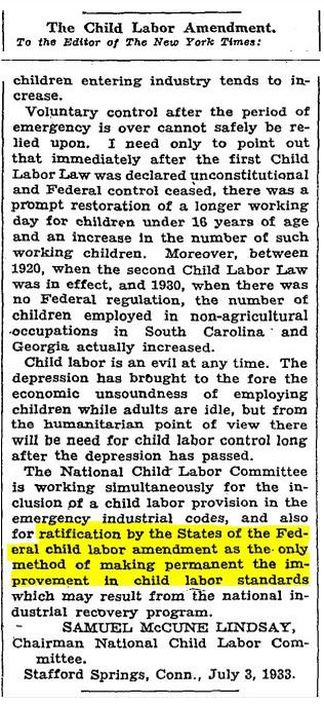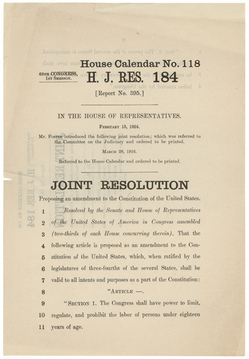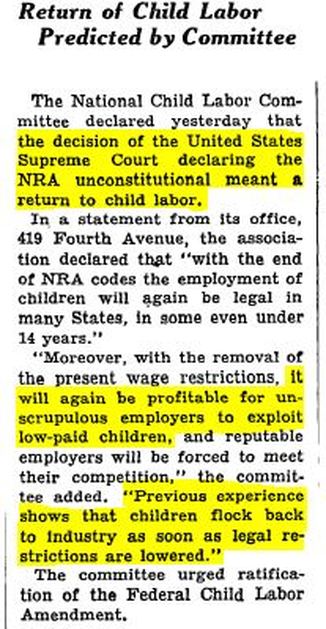Failed Legislation
Keating-Owen Act
"The first child labor bill, the Keating-Owen bill of 1916 used the government's ability to regulate interstate commerce to regulate child labor" -United States National Archives [1916]
The National Child Labor Committee fiercely advocated for the passage of the Keating-Owen Act, which:
"...banned the sale of products from any factory, shop, or cannery that employed children under the age of 14, from any mine that employed children under the age of 16, and from any facility that had children under the age of 16 work at night or for more than 8 hours during the day" -United States National Archives [1916]
In an effort to gain public support for the bill, the NCLC condemned and reprimanded ineffective state legislation.
State laws governing child labor varied immensely by state, and were very easy to thwart.
"No child under thirteen years of age can, according to law, be regularly employed, but in every industrial center where children are to any extent employed...the law is evaded" |
"Well, I used to go to school, and then a man came up to my house and asked my father why I didn't go to work, so my father says I don’t know whether she is 13 or 14 years old. So, the man say you give me $4 and I will make the papers come from the old country saying you are 14. So, my father gave him the $4, and in one month came the papers that I was 14. I went to work, and about two weeks got hurt in my head" |
|
Although the Keating-Owen Act was initially passed and signed into law, the Supreme Court ruled it unconstitutional in Hammer v. Dagenhart 247 U.S. 251 (1918).
"It overstepped the purpose of the government's powers to regulate interstate commerce. In its opinion the Court delineated between the Congress's power to regulate production and commerce" -United States National Archives [1918] |
Amendment to the Constitution
"A constitutional amendment was soon proposed to give Congress the power to regulate child labor"
-United States National Archives [n.d.]
The NCLC understood the potential strength of a Child Labor Amendment, and supported it profusely.
"The campaign for ratification of the Child Labor Amendment was stalled in the 1920s by an effective campaign to discredit it. |
Ultimately, these accusations were effective and the amendment did not receive enough votes to ratify it to the Constitution.
National Industrial Recovery Act (NIRA)
|
|
"The National Industrial Recovery Act (NIRA) was passed by Congress on June 16, 1933. The New Deal law was designed to promote recovery and reform, encourage collective bargaining for unions, set up maximum work hours and minimum wages, and forbid child labor in industry" -Enrolled Acts and Resolutions of Congress, General Records of the United States Government [2003] |
However, the National Industrial Recovery Act did not last long enough to implement its policies.
"In May 1935, in the case of the Schechter Poultry Corp. v. United States, the U.S. Supreme Court invalidated the compulsory-code system on the grounds that the NIRA improperly delegated legislative powers to the executive branch"
-Enrolled Acts and Resolutions of Congress, General Records of the United States Government [2003]
The NCLC and many others realized that the National Industrial Recovery Act being declared unconstitutional meant a return to unregulated and oppressive child labor.
"Figures from 129 cities in 29 states for the seven-month period after the NIRA expired show an increase of 58 percent in the number of employment certificates issued to children fourteen and fifteen years of age" |
These failed attempts at federal legislation demonstrated that eliminating child exploitation depended not only on garnering public sentiment against it, but also on the readiness of lawmakers and advocates for states' rights to increase the power of the federal government.
|
Thesis:
The leadership of the National Child Labor Committee piloted the social reform movement against the exploitation of children. By harnessing the power of propaganda to influence public opinion, the NCLC changed society’s perception, thus allowing for the passage of national legislation prohibiting the labor of children. The legacy of the NCLC lies not only in ending child labor, but also in establishing a precedent for future federal regulation of labor. |
Niharika Boinpally and Divya Pakianathan
Senior Group Website Word Count (Student Composed): 1166 Process Paper Word Count: 484 |


